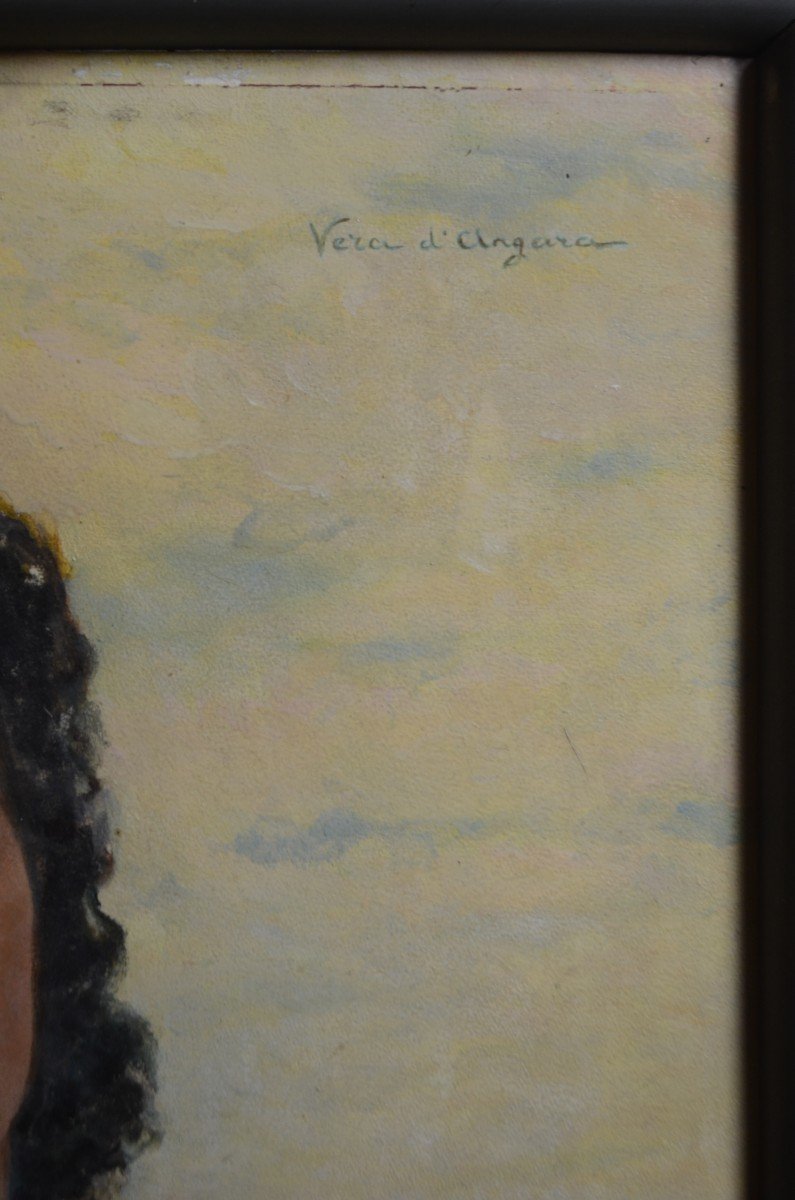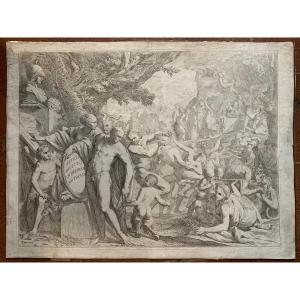Technique: Oil on panel
Dimensions: Height 59 cm x Width 58 cm
Frame: Painted wooden frame
The portrait depicts a woman dressed in green, adorned with a floral brooch at her collar. Signed in the upper right corner “Vera d’Angara,” a pseudonym inspired by the Angara River in Siberia, the artist’s native land. This painting, created in the 1940s-50s, showcases a refined and decorative aesthetic typical of the period.
Historical Context and Artist’s Biography:
Vera d’Angara, pseudonym of Vera Michajlovna Natenson (1886-1971), was a fascinating figure of the Russian cultural diaspora. After spending her childhood in Siberia and studying in Irkutsk, she moved to Europe in the early 20th century. Her life was marked by two significant marriages, both with notable figures.
Her first marriage to Pёtr Jakovlevič Efron, brother of Marina Tsvetaeva’s husband, introduced her to a vibrant intellectual environment, but her personal life was overshadowed by difficulties, including the loss of their daughter Irina. Following her husband’s death, she married Il’ja Lazarevič Erenburg, a Menshevik politician and art enthusiast. This second marriage strengthened her connections to the art world, enriching her career as an illustrator and actress.
In the 1920s, she adopted the artistic name “Vera d’Angara” and began a cinematic career, starring in several silent films produced by Selecta-Toddy. Later, she focused on illustration and graphic design, collaborating with magazines such as Il Travaso delle idee and Yamato, and illustrating books, including a collection of Japanese fairy tales published by Hoepli in 1940.
After World War II, she participated in exhibitions dedicated to Russian artists in Italy, including a show in Rome in 1947. Her art, influenced by European modernism, maintained a strong connection to her Russian roots, blending tradition with modern decorative sensitivity.
The artwork comes from a private Florentine collection, reflecting the integration of Vera d’Angara’s works into Italian cultural circles.
Condition:
Good.
This portrait is not only an example of Vera d’Angara’s artistic skill but also a valuable document of her extraordinary life, spanning eras and cultures, between Russia and Italy.
















































 Le Magazine de PROANTIC
Le Magazine de PROANTIC TRÉSORS Magazine
TRÉSORS Magazine Rivista Artiquariato
Rivista Artiquariato